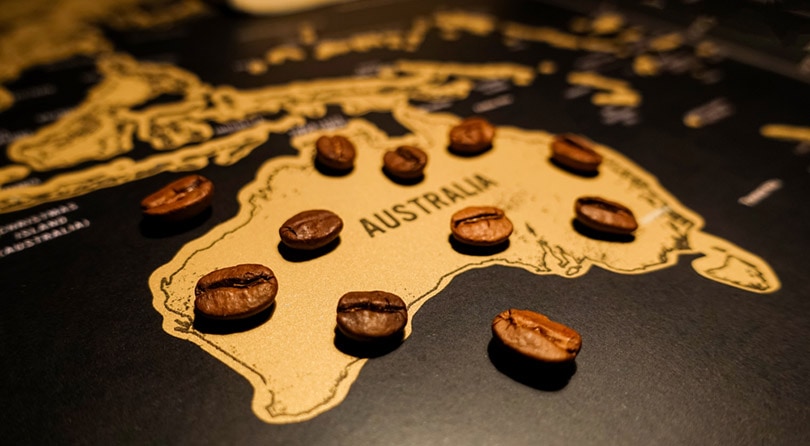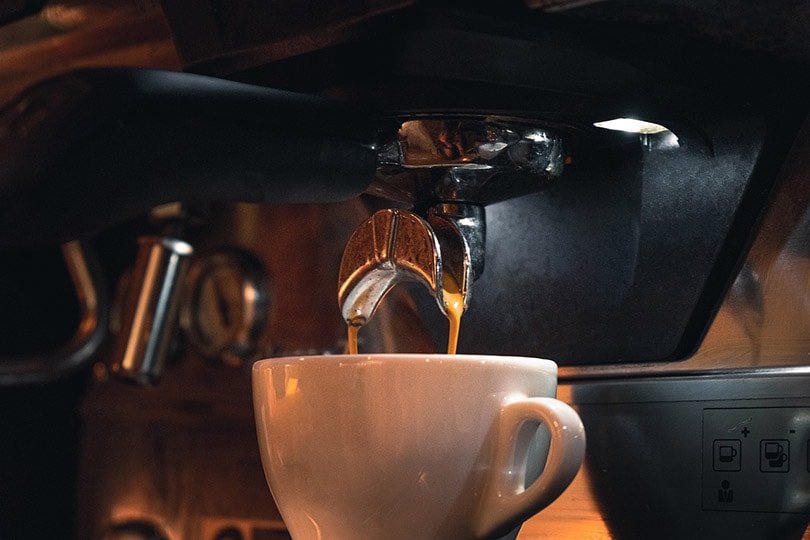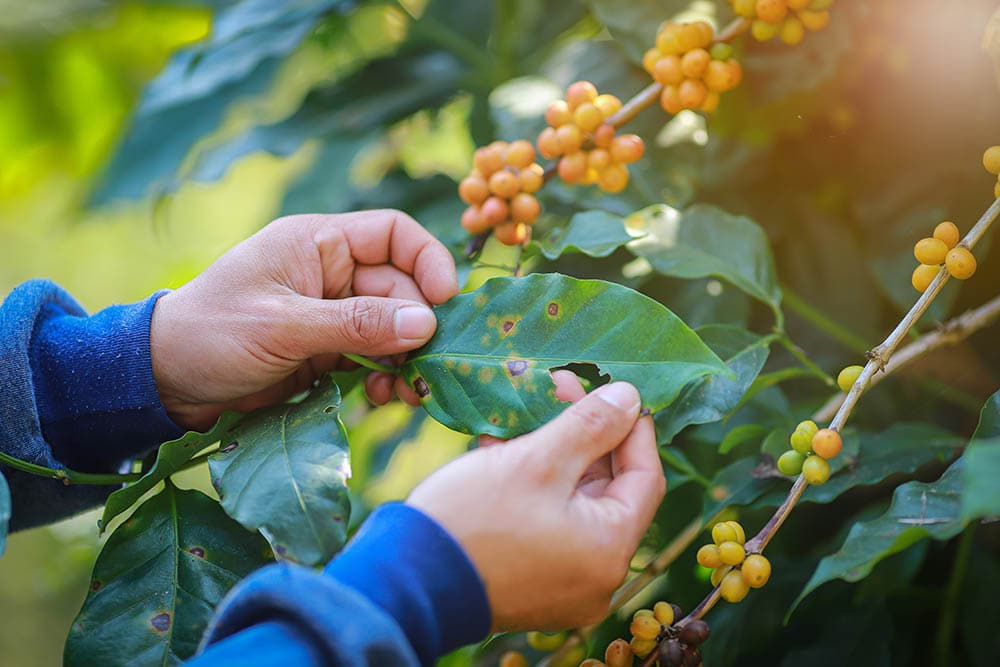
Although Australia is starting to grow more coffee annually, they’re more famous for roasting coffee than farming it. Coffee roasters and shops source their green beans from many different countries and locations, always on the search for the highest-quality beans available. While Americans tend to prefer cheaper coffee and complex flavored beverages, Australian coffee is all about premium coffee beans and top-notch flavor.

Australian Coffee Overview
Roast Preferences
Australian-roasted coffee is usually a light or medium roast, as they strive to retain the flavors of the green beans as much as possible. Darker roasts are available in some coffee shops, but they’re not as popular due to the taste changes dark roasts go through.

Flavor Profile
Coffee in Australia is an art form of flavors, using lighter roasts to bring out the notes that darker roasts lose during the roasting process. Instead of the acidic and bitter coffee-like drip-brew tends to produce, Australian coffee has a stronger yet less bitter taste, with more noticeable notes of caramel. It’s also got a natural sweetness to it, which is one of many reasons why they don’t need a ton of sugar to enjoy it.
As for coffee grown and roasted in Australia, there is not nearly as much information. Since it’s an Oceana region and grown at elevation, coffee beans from Australia will have similar flavor profiles to plants like Jamaican Blue Mountain and other specialty coffee. However, as time goes on and coffee farming increases, more specific flavor profiles will start to form.
Brewing
Coffee in Australia is mostly espresso-style, which makes the coffee flavors stronger without the bitterness of darker roasts. They favor the simplicity of espresso-based drinks like flat whites and long blacks, which help showcase the artisanal flavors of high-quality coffee beans. If you are looking for a caramel macchiato with extra liquid sugar, you’ll be missing out on premium-level coffee experiences that places like Melbourne, Sydney, and Perth have to offer.
In fact, their preference for flavor and simple drinks makes it one of the few places where Starbucks struggles immensely. While Australians enjoy the flavors of coffee with no added sugar or flavors, Starbucks drinks can have more than 40g of sugar per drink. Simply put, crazy flavors and sugary drinks don’t compete with the standards they have for coffee.

Coffee in Australia: A Major Importer
The first thing to know about coffee in Australia is that most of their coffee is imported then roasted locally. That means a lot of the beans are from different locations around the world rather than from within the continent itself. While they’re known for their premium coffee roasting, they’re still behind in terms of coffee growing. Still, Australia is starting to show signs of increasing coffee farming, trying to keep up with the global demand for high-quality, premium coffee beans.
History of Coffee & Culture in Australia
Coffee is an important part of Australian culture and daily living, a serious art form that requires top-level baristas to supply the increasing demands. However, that wasn’t always the case, as coffee was introduced to Australia. Like many other continents and regions, coffee was brought to Australia by colonial settlers.
Coffee didn’t find its way to Australia until 1788, brought by colonial settlers. They brought coffee plants from Brazil, hoping to plant and harvest them in their new settlements. However, coffee-growing never really caught on until more recent years. While farming coffee wasn’t a major success, the beginnings of coffee culture in Australia started with those first few plants.
It wasn’t until the late 1870s that coffee shops started opening, especially with Parisian coffee shops growing popular in Europe. With an anti-drinking movement causing bars to close early, it was only a matter of time until coffee shops really took hold of Australia. However, the espresso style of brewing coffee didn’t start until the 20th century.
When Italian immigrants started moving to Australia in the early 1930s, during the war, they brought along their espresso-making machines. The espresso-style quickly caught on and is still the main style of brewing today, making a statement to the world about artisanal, premium coffee. The influence of Australian coffee is growing globally, with Australian coffee shops opening in other places like New York.

Coffee Farming in Australia
Since coffee farming is still a smaller niche, it’s hard to tell how long it will take for Australia to catch up to the bigger coffee-producing countries. However, with the growing demand for high-quality coffee and Australia’s elevated growing regions, there’s a chance that their production will increase yearly.
Coffee farmers in Australia typically grow Arabica beans, specializing in small, high-quality batches. Like other premium arabica coffee plants, Australian coffee farmers grow their plants at elevation. The rich soil in the coffee-growing regions and the cooler climates make certain regions perfect for coffee growing, as the arabica coffee plant is a delicate one to grow.
There are a few key regions for growing coffee in Australia: in the southeast region of Queensland, northeast New South Wales, and along the Atherton Tableland (northern Queensland). Between the elevation and the perfect coffee climate, Australia’s coffee farming produces top-quality, artisanal coffee beans.

Conclusion
Australia has a strong coffee culture, a rare type of coffee stance that gladly passes on the sugary iced lattes. Australians prefer the espresso brewing with light roast coffee blends, enjoying the finer notes that darker roasts lose. Appreciating the art and flavor of premium coffee, Australians have high standards when it comes to their morning brew. While they’re still not known for their grown coffee yet, coffee farming is starting to take off.
Featured Image Credit: futuristman, Shutterstock
















